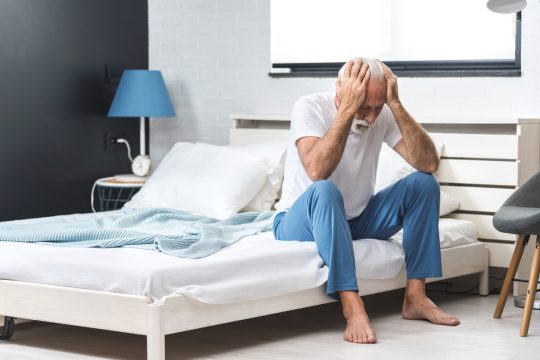
(Editorial Note: This article has been provided to AMAC Foundation by the staff at J. Flowers Health, and is provided to our readers as a general public service. The full content of this extensive article can be accessed via the links appearing below.)
Chronic pain (long-term pain) affects about 40 million people in the US.1 Some sources say the numbers could be as high as 100 million. Beyond the debilitating personal effects, chronic pain costs the US over $600 billion every year.2 Pain is a subjective experience. What’s painful to one person might be just a slight discomfort to another. That said, pain that lasts for long periods could be crippling, regardless of its severity. People in the US report having more pain than people in other countries. 1 in 3 Americans reports that they experience pain “often” or “very often.” In Croatia, the proportion is only 1 in 10 people.3 This is according to the International Social Survey Program. In the US, 126.1 million adults had experienced some pain in the past three months. Among them, 10.5 million had experienced severe pain every day.4 In 2013, 178 million Americans aged 18 years and older had at least one painful condition. This was up from 120.2 million in 1997.5
What Is Pain?
The International Association for the Study of Pain (IASP) defines pain as “An unpleasant sensory and emotional experience associated with actual or potential tissue damage, or described in terms of such damage.”6 In layman’s terms, pain is an experience that causes discomfort. It may be due to an injury or to the brain’s inability to process pain signals properly. Pain may vary in severity, location, and the involvement of body parts. Some pain may be limited to the area of injury, while some pain may affect the entire body. A headache involves only the head, and a stomachache affects only the belly. People use different terms to describe their pain. Some of them include:
- Burning
- Sharp
- Dull
- Intense
- Aching
- Cramping
- Shooting
- Stabbing
Footnotes:
- https://nccih.nih.gov/research/results/spotlight/Prevalence-Profile-High-Impact-Chronic-Pain
- https://www.hsrd.research.va.gov/for_researchers/cyber_seminars/archives/2351-notes.pdf
- https://www.theatlantic.com/health/archive/2017/12/america-experiences-more-pain-than-other-countries/548822/
- https://www.ncbi.nlm.nih.gov/pmc/articles/PMC4562413/
- https://nccih.nih.gov/news/press/02122019
- https://www.iasp-pain.org/Education/Content.aspx?ItemNumber=1698#Pain
Full Article Table of Contents
- Chronic Pain in the US
- What is Chronic Pain?
- What Makes Pain Chronic?
- What Causes Chronic Pain?
- Who Suffers from Chronic Pain?
- How is it Diagnosed?
- Pain Management
- Why is Proper Testing Key
I go to a pain clinic. I developed tolerance to the opiods. Because of the bad rep opiods have and gov’t.interference I no longer get relief. Those of us with chronic pain are not the cause o drug abuse in this country so why take it out on us? I’m 72 so I’m at the “jumping off place anyway” so just let me have some relief. I’ve had my pain over 40years.